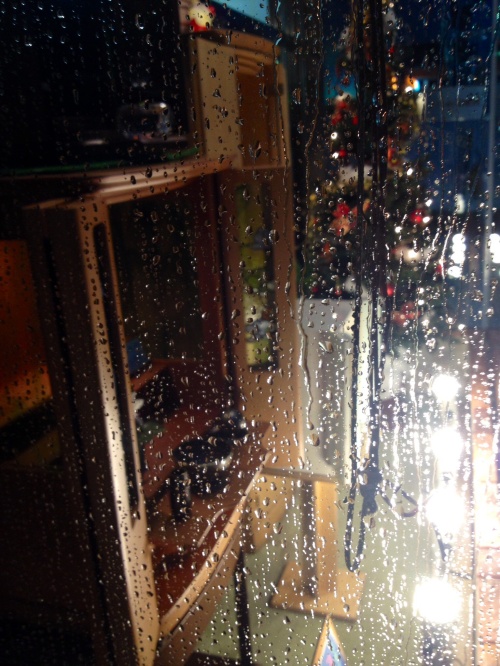
I went to see Gone Girl yesterday at the local multiplex. Although by no means one of my favourite cinematic auteurs – he is too technical, precise, for me, almost surgically so, too male: his films like darkly-lit, immaculately oiled machines ( I like things more oneiric and primal, less rational, more lurid), at the same time I do appreciate director David Fincher’s great skill in producing high quality mainstream entertainment that can keep you gripped and pinned to your seat in grim, dystopian, and atmospheric, intricately crafted mood pieces such as Seven, Zodiac, The Social Network, and The Girl With The Dragon Tattoo.
Though it took a while for me to get drawn in this time, especially as a lot of the cinematography was literally too dark on the screen to see what was going on, as it gradually began to span out and release its gelid tentacles, ultimately, I think Gone Girl is the film I have enjoyed most of Fincher’s since Seven (1995), a film I found so horrifically suspenseful at the time, as Brad Pitt and Morgan Freeman waited tensely in the desert for Kevin Spacey’s final act of maniacal cruelty, that I thought I was going to have a heart attack in my cinema seat. The suspense was unbearable, and I still remember my friends and I blinking out into the London daylight freaked out and nerve-stripped, laughing at our panicked, collective reaction. Only a born film director can achieve such an effect, and Gone Girl had me again leaving the cinema feeling consummated yet repelled: a coil of unease in my heart and stomach and a sense of something – the unflinching dissection of a marriage and the cruel dictates of heterosexuality; images of blood and horror retained in the retina, but most of all, at the abstract, artistic level, a convincing gut sensation, of a compelling, if archetypal, portrayal of female jealousy and revenge. This is Medea and Lady Macbeth in a crisp, Calvin Klein blouse; ferociously cool and calculating, yet, in her bruised and fiercely depilated guise, divorced from her corporal, and smelling, primal self.

In essence, if you haven’t already seen it (most people seem to have done: it is Fincher’s biggest commercial hit so far), I will try not to spoil the twists and turns of what happens in this film, but the plot essentially concerns the decimated relationship of married couple Nick Dunne (Ben Affleck) and his very W.A.S.P-ish trophy wife, Amy, (played quite brilliantly by British actress Rosalind Pike): a cool, elegant, almost Hitchcockian blonde who goes missing the morning of their fifth wedding anniversary and is presumed murdered (by her own husband). The rest of the film deals with the twists and turns of this setup, revelling in mystery and the grimly unexpected, and though many will find the film schlocky and unrealistic, melodramatic, offensive even, in its entrenched gender and thriller clichés, I gradually found myself enjoying the film immensely. For me, it was quite fascinating on a number of levels, both visually and aesthetically, but also in its sharp incisions: its knife-sharp depiction of what is expected of marriage in some quarters, and the effect that has on the individual: the potentially corrosive, even murderous, consequences of having to act the part.
This is a film of surfaces. Clean, cold, antiseptic surfaces. Of odourlessness, and of marriage as ‘performance’, an institution that must be perfect, unattainable, in that wealthy, upper middle class U.S manner: the gleaming artifice of pearl-toothed smiles and societal assumptions gleaned mindlessly from TV and the media, which, in the union we witness on screen at least, is quickly reduced, from a readily sanctioned ‘bliss’, initially, to a slowly corruptive poison as the cracks in the porcelain of scrubbed perfection soon become evident.
I write the word ‘bliss’ in quotation marks because it seems to me that even the apparent giddy joyfulness that Nick and Amy seem to experience at the onset of their relationship, quipping and jesting ironically in the way that people always do on American television, that acidic, ‘meta’ self-awareness, as if heartfelt, unselfconscious, dialogue were an impossibility, feels immediately forced and in the firm grip of their preimagined ideals of what ‘love’, ‘sex’, and ultimately, ‘marriage’, are. It is patently love at first sight, though, as they flirt at a party of mutual acquaintances, and hereafter we find them, out in the sugar snow, sealing their immaculate conception with a kiss, the pinnacle of romance already reached before they have even begun. And, thus, nuptials, and the moving in to their ‘beautiful home’ in Missouri, when Nick’s mother becomes sick, and the New York literary life is no longer a possibility because of the economic recession. We see that money is the devil that undoes the bond, also ‘elevating’ the human animal beyond its more instinctual desires: see Amy in her former (stalker) boyfriend’s lavish, hi-tech, lakeside house, again, so purely odourless, artificial, airless, yet so fully equipped: all the machinery, and gadgets you could ever want, automated; all the wrapped cellophaned designer fashion and makeup she could want, to ‘restore’ Amy to the doll that Desi ultimately wants to see her as. Here we enter a veritable vortex of fakery: motives concealed, Nick/Ben bristling with righteous hatred, yet still maintaining his ‘hot’, sincere, everyman quality (he definitely has a smell, even if it is just an honest smell of booze, man sweat and unwashed hair), as he makes a TV appearance with the most insincere and phony chat show sensationalist.
Lies, even at the external, real world level: Rosalind Pike, an English woman playing a Manhattan faking a southern accent; Neil Patrick Harris, gay playing straight in this velvet-roped prison, where the only release is a truly shocking scene involving a slit throat, false rape, and a Carrie-like return back to ‘reality’. Only blood-caked, and (very briefly) animal-like, does Amy attain any semblance of flesh and blood, odorous human.


The homecoming. That home. Mine, and Duncan’s, idea of hell. That so -called ‘perfect home’, a ‘home’ (even that word has become an enforced viper’s nest of commercial and real estate directives), in fact, to my personal aesthetic in any case, so ugly; fixed and unmoulded; inorganic, and unappealing (many/ most viewers will of course not think so, they will be coveting it).
Unstained (except, on the day of the anniversary, with blood). Sanitary. Stripped of any life or colour, of anything organic, of smell. Vast and spacious, with its spiralling staircase, ‘storage space’; white, grey, pristine. Painted and dead with sealants. Polyurethane.
And Amy. While Nick has a slightly unripe aspect (as one reviewer puts it, Ben Affleck perfectly nails the role of the ‘golden boy gone to seed’), the cold and standoffish Amy, beautiful and magnetizing to behold yet curiously sexless, looks as if her skin and body have been bleached and completely deodorized (she even mentions the ‘brutal Brazilian waxes’ that have been supposedly been forced on her); a well heeled and educated, Upper West Side mannequin transmuted reluctantly to the south and preserved in a wax-like state of ‘feminine’ untouchability, of modern, all performing wifeliness.
Predictably, this state of grace is not to last, and although things are told in time warping flashback, with unreliable narrators and carefully misguiding clues, once financial woes take hold, the saccharine, impeccable nature of the couple’s marriage begins to quickly unravel at the seams, both partners finding that they have only the reality of their true natures (though at all times concealed) to fall back on. The rogueish country boy becomes a game-playing, but potentially violent, slob; the wife a directionless, depilated ice queen, distant and shrewish, unavailable, lost, the husband lazily committing adultery two years into their relationship with a needy, if voluptuous, university student he has coaxed into the bar bought for him with his wife’s savings.
At least his girlfriend looks real, scented: ripe with longing. Outward-looking; real. Amy, on the other hand, lost, seems to crystallize a thousand misogynist clichés of the clammed up ice-bitch, apoplectic, yet mute. Like Glenn Close before her in Fatal Attraction, she is a woman, a cipher, a body, to be used and tossed aside, invoking the hatred of the heterosexual male viewer fearing the ensnaring trap of the spider ( her snow white beauty notwithstanding): arousing anger in many female viewers, probably, also, for the valid reason that the character is possibly nothing but a sexist rehashing of the ‘hell hath no fury like a scorned woman’ trope. This aside, for me, a visual and atmosphere-driven viewer, the entire affair, from the cinematic perspective, was thrilling and perturbing, but also deeply alienating. Locked in their projected roles, the characters seem trapped in hell: of shiny, smiling superficiality, all in the name of procreation, money, and the keeping up of appearances. What for?
The coiling future foetus scars the mind tissue with its inevitability, the characters now back, inexorably, in their taupe, scent-free corridors, ready to face ‘the world’ and bring up a baby, even as they find themselves literally smashing each others’ heads against the walls – a total lack of true bodily and fluid connection once the stagey, self-aware and choreographed ‘lovemaking’ of their initial sexual attraction has subsided. Amy couldn’t possibly be less scented; less turned inward towards her own self in blanched out fury than she is; livid; frozen; and it is this pale, sickened, and etiolated self, that, despite its outward appearance of socially accepted attractiveness and ‘beauty’, we can’t help but find so repulsive. She needs to come alive again from within – become warm again in her own skin. She needs skinship, to get beyond herself and her enamelled surfaces with smell. Consequently, If ever there were a character in need of a good, soul-anchoring, body-releasing perfume to bring her back to the real surface and true connections with other human beings, to reach out wordlessly and communicate, it is she: this Amy, this odourless, self-obliterating ‘Gone Girl’.







































